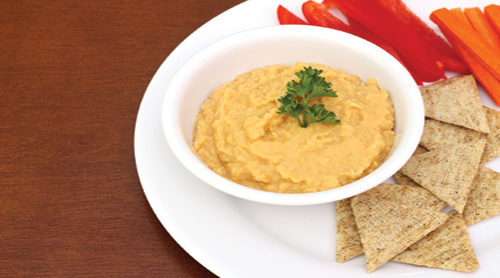Is it crunch time for your shoppers? Or maybe they’re looking for a sugary sweet deal? Regardless of their snack-time preferences, be sure your store has its bases covered for high-quality, healthy between-meal bites.
Bring on Taste without Haste!
There are times when a plain old pita chip or oatmeal cookie may serve us just fine. But other times, our taste buds are calling us to live dangerously. For this reason, interesting and surprising flavor combos can be flagged as a trend in the snacks category. Says Jen Ramstad, director of marketing for Pamela’s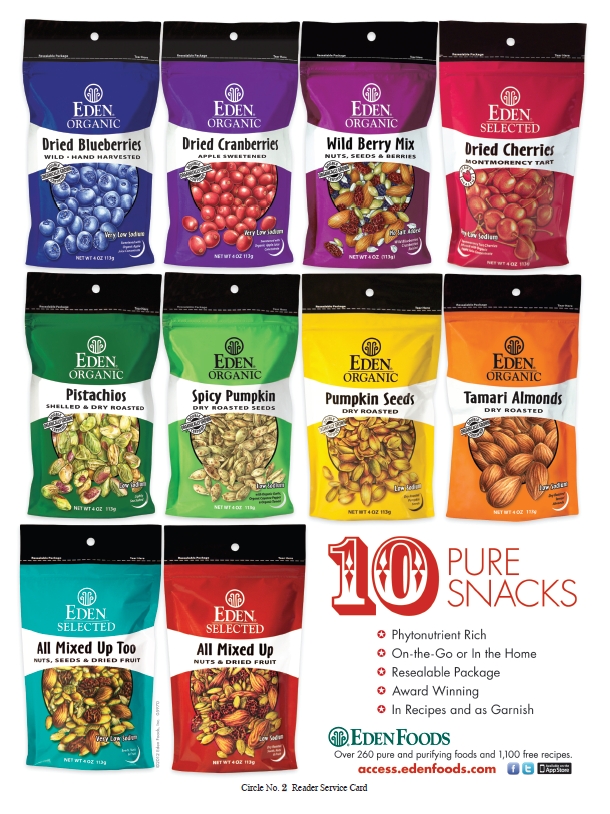 Products, Ukiah, CA, “There have definitely been many innovations in snacks flavors. Consumers have sophisticated palettes and are seeking something unique and out-of-the-ordinary.”
Products, Ukiah, CA, “There have definitely been many innovations in snacks flavors. Consumers have sophisticated palettes and are seeking something unique and out-of-the-ordinary.”
By “interesting” flavors, Lonnie Williard, vice president of marketing at Mediterranean Snack Food Co., Boonton, NJ, means those that are “not too niche or isolated.” At the same time, such flavors may be influenced by ethnic culinary preferences. Examples from Williard include cucumber dill (AKA tzatziki), lime cilantro, mango and olive tapenade.
One snack foods company known for adding a twist to old favorites is Kettle Brand, Salem, OR. Zesty Ranch, for instance, isn’t your run-of-the-mill ranch chip, says the firm’s director of marketing, Marc McCullagh. “We’ve added a hint of pepper to the tangy sour cream and savory herbs to make dips unnecessary. But at Kettle Brand, we’ve always been about interesting combinations.” Another example, he says, are Spicy Thai chips, which “marry fresh ginger with the heat of Thai spices and have been a fan favorite for years.”
One welcome trend for natural foods shoppers is that snack makers are offering such new flavors without any artificial aids. States Todd J. Kluger, vice president of marketing at Lundberg Family Farms, Richvale, CA, “Cleaner, brighter and fresher flavors are making their way to the shelf without the aid of flavor enhancers and boosters.”
Lundberg, like Kettle Brand, has been experimenting with flavor combinations. For instance, the firm’s Cracked Black Pepper combines both white and black peppercorns, while its Spicy Black Bean variety “employs the heat of jalapeño and the tanginess of tomato to deliver a warm flavor combination,” says Kluger. Cheese flavors aren’t wimpy either, and now offer intense natural add-ins like chili lime.
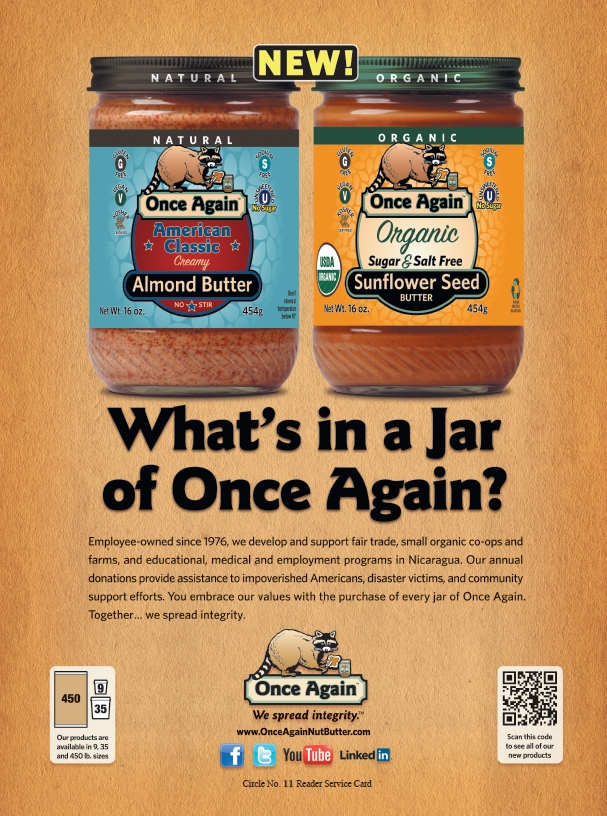 Snack makers’ flavor profiles are growing and growing, says Kluger, who predicts, “The spice cabinet is full of flavors, and we should expect to see more of those exciting options like red or yellow curry, beriberi or adobo to make it to the snack shelf soon.”
Snack makers’ flavor profiles are growing and growing, says Kluger, who predicts, “The spice cabinet is full of flavors, and we should expect to see more of those exciting options like red or yellow curry, beriberi or adobo to make it to the snack shelf soon.”
Don’t make the mistake of assuming that unique flavors only apply to savory snacks. States Vanessa Muniz, marketing assistant at Au’some, Inc. (maker of fruit snacks), Monmouth Junction, NJ, “Flavor combinations are the next big thing.”
To get a handle on how combos are affecting its market, Au’some used Facebook to survey its customers about their favorite flavors. They used the information to pair new flavors in its Florida’s Natural Au’some Nuggets lines to offer “a more flavorful bite,” says Muniz.
The result? States Muniz, “From the consumers reactions and comments, we saw that they favored the blended flavors over our original straight flavors of strawberry, orange, green apple and blueberry.” Now, the line includes blends like Berrilicious (a blend of strawberry, cherry and blueberry), Fruit Grove (a combination of strawberry, banana and orange) and Orchard Sours (a tart mix of lemon and green apple).
There’s another element to consider about unique flavors. Some people believe taste can bump a food into the gourmet category and many companies can achieve this elevation without a hefty price tag. Adds Kluger, “Gourmet snacks can appeal to a wide variety of people, and they do not have to be exclusionary just for the so-called premium appeal. Mainstream snacks and snack flavors dominate the snack category, and the uniqueness and individuality of snack products can be expressed on the shelf through new gourmet and premium styles and flavors.”
Boosting Health
 Though many Americans snack to achieve a flavor fix, others just want to fill up. But, here’s the catch: mini-meal seekers often want the taste, the fullness and the health value. This isn’t always an easy balance to maintain, but natural snack makers are working their magic at it. Says Larry Cornick, marketing manager of New England Natural Bakers, Greenfield, MA, “We believe a product must taste great and contain healthy ingredients and as a result, it should be satisfying.”
Though many Americans snack to achieve a flavor fix, others just want to fill up. But, here’s the catch: mini-meal seekers often want the taste, the fullness and the health value. This isn’t always an easy balance to maintain, but natural snack makers are working their magic at it. Says Larry Cornick, marketing manager of New England Natural Bakers, Greenfield, MA, “We believe a product must taste great and contain healthy ingredients and as a result, it should be satisfying.”
Other firms are skirting the fat and carbs with healthy preparations. For instance, Kettle Brand offers a baked potato chip line. “With 65% less fat than regular potato chips, they are a healthy alternative that doesn’t require our consumers to sacrifice flavor,” according to McCullagh.
Meanwhile, Williard explains that Mediterranean Snack Food Co. offers baked lentil chips that “curb carb cravings.” She states, “Our Baked Lentil Chips have 22 chips per 1-oz. serving in only 110 calories, so the snack is really calorically smart.”
These snacks are filling, too, thanks to the fiber content. Adds Williard, “They keep someone full longer, which of course can help consumers trying to lose weight.” Mediterraneans Snacks isn’t alone; many companies know the name of the game is fiber for satiety. Lundberg Family Farms chooses to use whole grains like brown rice to up the fiber content and create a “satisfying snacking experience,” says Kluger.
Companies are also keeping their eye on a traditional favorite in the snack category: sugar. “Taste is always paramount, but it is important to keep in mind the attributes relevant to our target market. We want to meet or beat their expectation,” says Ramstad. Thus, her company focused on gluten-free, lower-sugar bars th at also include whole grains and omega-3s. These Whenever Bars come in Oat Raisin Walnut, Oat Chocolate Coconut, Oat Blueberry Lemon and Oat Cranberry Almond.
at also include whole grains and omega-3s. These Whenever Bars come in Oat Raisin Walnut, Oat Chocolate Coconut, Oat Blueberry Lemon and Oat Cranberry Almond.
Opposites Attract in Snacks
One dichotomy in the snacks category is simultaneous interest in grab-and-go and green-packaged snacks. Companies are taking this dual interest seriously. States Cornick, “We try to source the most environmentally friendly packaging when possible without sacrificing shelf life and freshness; it’s a huge challenge but one that is important to our company’s overall mission.”
Mediterranean Snack Food Co. offers chips in single-serve packs, but “we continuously collaborate with our packaging vendors to reduce materials and our carbon footprint,” states Williard. “For instance, currently we are working with corrugate suppliers to ensure even further materials reduction.”
Likewise, Pamela’s Products’ cartons are made with 100% recycled paperboard and printed with soy ink. Adds Ramstad, “We continue to look for alternative films and printing methods that are better for the environment and will make changes as more supply and opportunities come available.”
GMOs and the Snack Market
With canola, soy and corn as frequent ingredients in the snack category, it’s a safe bet that genetically modified organisms (GMOs) could be quiet, but unwelcome components, too. “GMOs have been a growing concern for the average shopper, both in the natural foods channel as well as in the conventional channel,” says Kluger. “The awareness of GMOs in the food supply is larger in the natural foods channel at about 60% or more.”
While many of your shoppers are “smart, savvy and well-educated” about GMOs, as Ramstad puts it, you may still find yourself working to explain how concerned shoppers can avoid them.
“It’s a tough issue,” says Doug Foreman, CEO of Beanitos, Austin, TX. “The biggest problem that we face as manufacturers is to source non-GMO products and, subsequently, the ability of the people who are supplying them to grow non-GMO crops. It’s hampered by how GMOs migrate between crops. You can’t segregate them.” Beanitos, for instance, has spent much tim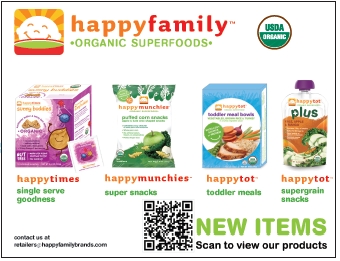 e satisfying its non-GMO requirement for the company’s bean chips topical seasonings. Foreman adds that it takes a lot of pressure from manufacturers to ensure a GMO-free supply of raw materials.
e satisfying its non-GMO requirement for the company’s bean chips topical seasonings. Foreman adds that it takes a lot of pressure from manufacturers to ensure a GMO-free supply of raw materials.
Shoppers who want to steer free of GMOs should, at the most basic level, buy a certified organic product, which lacks GMOs by requirement. Beyond that, more and more products are becoming verified Non-GMO by the Non-GMO Project (including Lundberg Family Farms, Beanitos, Mediterranean Snack Food Co. and more).
Retailers who want to get in on the act can become retail partners with the Non-GMO Project, says Kluger. This means they will carry and support products that are verified as Non-GMO. He adds “Retailers can also take part in Non-GMO month (October), build Non-GMO displays and end-caps to promote Non-GMO verified products, and make Non-GMO education part of the learning curriculum for employees at the store level.” Joining in local Just Label It events can help make the point, too.
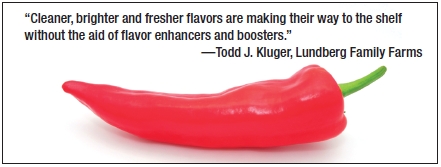 Perhaps one the biggest problems with the non-GMO movement, says Foreman, is education. “There’s no 10-second elevator pitch for non-GMOs. You can’t explain to someone what GMOs are in a length of time that keeps they’re attention. We’re all so used to a sound bite that if you can’t get out the non-GMO argument in a sound bite, then you have a problem getting people to understand what GMOs are,” he explains. “We just need to let people know what’s going on with GMOs before we get to the point that there’s no turning back. We just want to have a choice.”
Perhaps one the biggest problems with the non-GMO movement, says Foreman, is education. “There’s no 10-second elevator pitch for non-GMOs. You can’t explain to someone what GMOs are in a length of time that keeps they’re attention. We’re all so used to a sound bite that if you can’t get out the non-GMO argument in a sound bite, then you have a problem getting people to understand what GMOs are,” he explains. “We just need to let people know what’s going on with GMOs before we get to the point that there’s no turning back. We just want to have a choice.”
Thus, retailers should outline and even rehearse their non-GMO pitch. Train staff to do the same, and be prepared to help shoppers find snacks that are free of genetically engineered components. WF
Published in WholeFoods Magazine, April 2012

